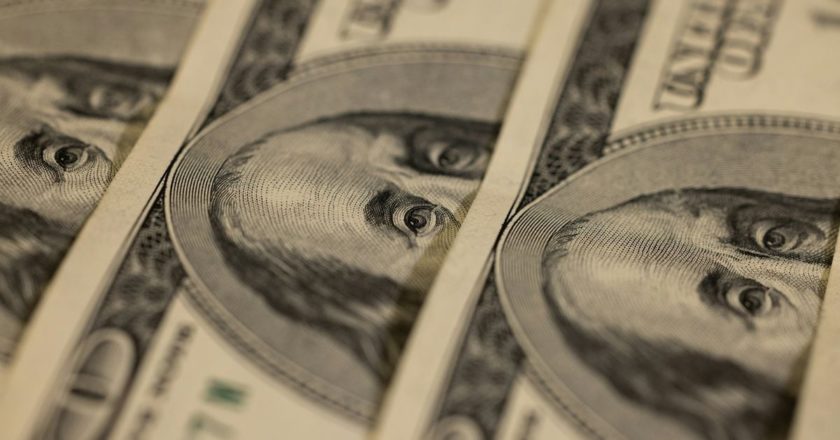Stablecoins: Bad Money For the Modern Age
November 28, 2018 by Evan Faggart
Stablecoins — a crypto-token pegged to a fiat currency or some commodity — have become all the rage in the latter half of 2018. But they’re not really all they’re cracked up to be. In fact, stablecoins aren’t much more than a 21st century update to a terribly failed experiment from hundreds of years ago.
Also read: Chinese Mining Operations Reportedly Closing Due to Crashing Crypto Markets
Subscribe to the Bitsonline YouTube channel for great videos featuring industry insiders & experts
Stablecoins: A New Spin on a Bad Idea
The main idea behind a stablecoin is to provide a cryptocurrency with most of the benefits of a blockchain-based currency while keeping its value steady by pegging it to a more stable asset.
The basic utility of value stability makes up the primary ethos of Tether — the original and most popular stablecoin. By maintaining a 1:1 peg to the United States Dollar, Tether users can theoretically enjoy the speed and cost-effectiveness of crypto without worrying about wild price fluctuations that destroy purchasing power.
However, while it sounds good on the surface, the seemingly simple ethos of value preservation introduces a myriad of economic problems to the market. Problems that both erode the benefits of crypto and bring in centuries-old problems faced by mainstream currencies.
Theoretically, if stablecoins were to become widely-used currencies, we would run into a modified version of Gresham’s Law. This economic law maintains that “bad money drives out good.” In other words, when a currency’s value is artificially raised through a peg to a more valuable currency, the more valuable money will disappear from circulation while the money with the artificially increased value floods the market.

This phenomenon happened several times over the centuries when governments pegged silver to gold, artificially increasing the value of silver. People stopped spending their gold — removing it from circulation — and instead spent silver. Since governments enforced these pegs by law, everyone was forced to accept a less valuable currency at an artificially higher face value, ultimately leading to businesses and creditors losing money, along with the emergence of economy-wide monetary complications.
Another complication that arises with these pegs is that governments can use them to debase the less valuable currency, exacerbating the problems even further. For instance, if a government pegged silver coins to gold, it could debase the former by minting them with cheap metals rather than silver. But because of the peg, they must be accepted at the face value determined by law — essentially giving the government a free pass to print money.
A historical example of Gresham’s Law in action is when the United States and Canada debased their silver coins in the 1960s. In order to make cheaper coins, the two countries removed much of the silver from their minting processes and replaced it with less expensive metals.
This process resulted in two different versions of the same coin. There were the original coins made of pure silver, and the new coins — made with cheap metals and thereby had a lower market value. However, law required that both coins retain the same face value, regardless of their differences in real value.
Citizens of the U.S. and Canada quickly began hoarding the original coins and spending the new coins in their place. As a result, the market was flooded with “silver” coins that were not worth their face values. In this case, though, the countries went off their gold and silver standards altogether shortly after, so many of the negative economic effects that come with Gresham’s Law did not occur.
Pegs That Stop Pegging
In the realm of stablecoins, pegs aren’t enforced by law, but they do artificially increase the value of the crypto-token being linked to a fiat currency or other valuable commodity. Tether, for example, was given a value of $1 USD per token even before launch, before anyone even expressed any desire to purchase and use the token. At the beginning, Tether’s value was essentially zero, but it had an artificial value of $1.
So, in a world where everyone uses stablecoins, the more valuable money or commodity will disappear from the economy, while everyone spends their artificially valuated crypto-token.
Therefore, once the inevitable complications arise from this peg to the dollar, USD would leave the market, and everyone would try to spend their tokens at face value — even if their real value was less than $1 per token.
With merchants, banks, and other financial institutions not bound by law to accept the token at face value, they would refuse to take payments at the pegged value. Thus, people would have to spend their stablecoins at a value greater than the peg — i.e., spending more coins for the same goods and services — or not spend anything at all.
This would create two situations. First, instead of spending their stablecoins at a value higher than the peg, people would sell their crypto-tokens back to the issuer for the pegged asset. And if done rapidly enough, this could deplete the issuer’s supply of the asset to which the stablecoin is pegged, making the tokens worthless and bankrupting the issuer in the process. Second, people wouldn’t spend anything at all, and the entire market would grind to a halt.
We’re Already Seeing These Stablecoin Consequences in the Real World
It might be argued that this is just a theory, and we don’t know if stablecoins will behave the same way as past assets with similar pegs. But we’re already seeing some of those monetary consequences happening in the real world. And we’re seeing those consequences take effect with Tether.
At Tether’s launch in 2014, the company compensated for the coin’s lack of real market value with marketing. With a 1:1 peg to the dollar, it said, Tether would always maintain a stable value. Furthermore, that stability would be guaranteed by dollar reserves held by Tether. The company assured it would always hold enough USD to keep the value of its coin at $1 — whether they had to buy or sell Tether to keep the peg. And so, crypto enthusiasts could enjoy the benefits of blockchain technology while being assured a secure value.
Then, Tether started printing coins. For years, the community questioned whether the company had enough USD to back these printed tokens. Tether assured the public that the funds were there, but an official audit never confirmed those claims, despite promises at launch that the company would undergo regular, third-party audits.
However, the coin’s value remained at $1 almost 100 percent of the time, so fears about coin printing never amounted to much.
That is, until Tether crashed and broke the peg.
On October 15, 2018, Bitsonline reported that Tether had crashed to a low of 87 cents. Since that day, the coin has not returned to its supposed value of $1. At press time, it sits at 98 cents.

But where was the company this whole time with its guaranteed value of $1? Why didn’t the company jump in at the crash and start buying up coins to preserve the peg? With endless promises that it had the USD reserves to back the years of token printing, shouldn’t this crash have been a small blip in an otherwise horizontal graph line?
With rumors surfacing and banking investigations arising, it’s becoming clear that Tether may not have been honest after all.
Minds Now Using Stablecoins to Screw Itself Out of Revenue
Despite warnings against Tether from skeptics, and Tether’s inevitable egg-on-its-face moment, crypto companies far and wide are still turning to stablecoins to improve their businesses.
Most recently, social media platform Minds announced it had converted its ERC-20 token — used to make payments on the platform — to a stablecoin pegged to 1,000 sponsored views on its platform.
In short, 1 MINDS token is now worth 1,000 paid views on the social media platform, meaning the price of MINDS will fluctuate based on the market value of the platform’s advertising service.
At first, this peg sounds like a great idea. However, when you look into it a bit, it becomes clear that this could be a worse business model than Tether.
The value of sponsored views on a small-time social media platform are likely more volatile than cryptocurrency itself, making this peg kind of pointless in terms of creating a crypto-token with stable value.
Furthermore, what if the value of MINDS grows higher on a secondary market than the current price of 1,000 views? It’s only logical that MINDS holders would do anything with their tokens BUT spend them on platform advertising. If they did, they would lose money in the arbitrage between the secondary market value of MINDS and the price of sponsored views. If that happens, then the company has cheated itself out of revenue, since people will trade MINDS on a secondary market rather than purchase advertising.
Thus, no matter the situation, it seems like stablecoins have little purpose other than serving as a crypto on-ramp for newbies. With bad economics, a proven track record of failure, and the lack of any real use cases so far, I would be willing to say that the crypto world should have listened to the warnings and stayed far, far away from stablecoins.
What do you think about stablecoins? Share your thoughts in the comments section.
Images via Financial Abundance, Tether, Daily Mail, Minds





